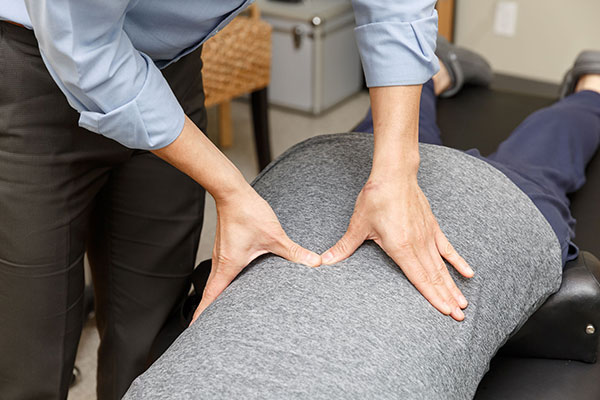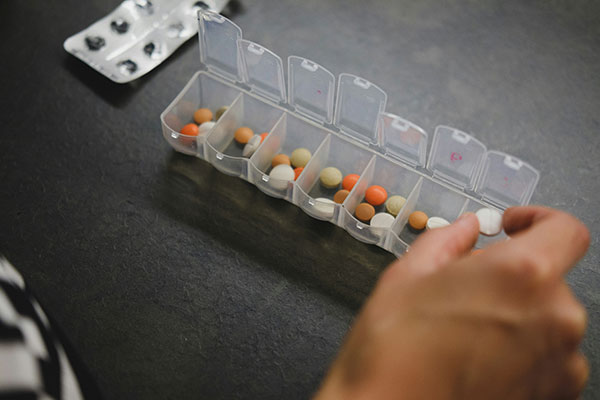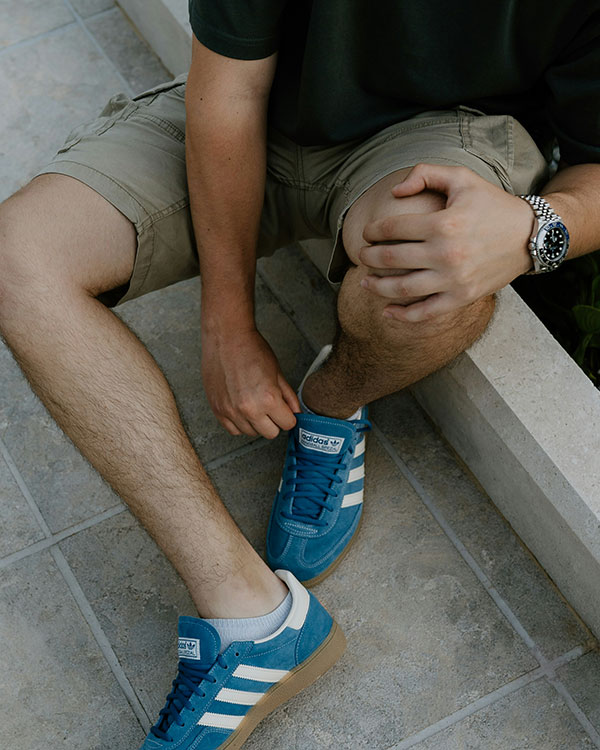What is ESWT?
Extracorporeal Shockwave Therapy, also known as ESWT, is a non-surgical treatment option for chronic plantar fasciitis, Achilles tendonitis, tennis elbow, shoulder tendonitis, and other chronic tendinopathies. “Extracorporeal” means “outside the body.” Shock waves, also known as pressure or sound waves, are generated by a special ESWT device and focused onto the targeted tissue. The shock waves are delivered to stimulate and reactivate the body’s repair mechanisms to advance normal tissue healing.
What is involved in the procedure?
On the day of the procedure, you will arrive at our office at the designated time prior to the scheduled appointment where you will meet your physician and technician. You will lie back comfortably with the area to be treated resting on the machine on a soft, water-filled membrane. The practitioner will make sure you are comfortable throughout the procedure. During the treatment, you will hear repetitive clicking sounds.
ESWT benefits patients because their condition can be treated extracorporeally, meaning outside of the body. Since ESWT is non-invasive, there is no lengthy recovery period, virtually no time off from work or risk of causing further damage. The same cannot be said with surgery.
What conditions can be treated by ESWT?
ESWT can effectively treat a range of musculoskeletal conditions. Complaints involving attachment points for tendons and ligaments in major joints such as the plantar fascia, Achilles tendon, shoulder, elbow and knee are common areas for ESWT treatment. Please contact In Health Clinic to discuss your individual condition with one of our practitioners.
How can I prepare for ESWT?
You will need to be available for the full course of treatment.
You should not take any non-steroidal anti-inflammatory drugs (NSAIDs), such as ibuprofen, for two weeks before your first procedure, and throughout your treatment. If you are unsure if any of your medicines contain NSAIDs then please check with your doctor, nurse or pharmacist.
What kind of recovery can I expect?
ESWT forces your body to create new tissue cells in the damaged area. Expect gradual healing to take place over days, weeks or months. Though not typical, some have mild soreness or bruising after treatment. Some people experience no more pain from day one. Most will have noticeable to significant improvement by the thirteenth week. A second treatment after sixteen weeks may be necessary in approximately 20% of patients. As it took time to create the injury, healing also takes time. Total healing of the area can take up to one year.
The best thing about ESWT is that unlike surgery, you avoid getting worse before getting better. You do not need to plan lengthy time off from work or your life for painful post-procedure recovery.
Are there any side effects to ESWT?
Compared to invasive or endoscopic surgery, ESWT has fewer side effects and a much shorter recovery time. The most common side effects include temporary pain (bruising and soreness,) swelling and petechiae (broken blood vessels that are generally of no concern.) These possible occurrences, however, usually clear within a few days. Moreover, the risks associated with surgical incisions and general anesthesia are eliminated.
How many treatments will I need?
The number of treatments varies depending on the indication and tissue response. The effect of the treatment is cumulative, so you will typically need more than one (3–5) treatment. Very often though, you will experience relief right after the first treatment.
When should I consider ESWT?
If you have had your condition for more than six months and have tried three conservative therapies with no results, don’t wait. It is natural to procrastinate, but it is not a good idea for tendonosis conditions, since continuously using degenerative tendon tissue can cause further damage.
For example, every time that you feel pain when you place weight on your heel or lift something with your arm, it’s because you are pulling against the tendon fibers. When the condition progresses to a rupture, ESWT is no longer an option and you will have no treatment alternative but invasive surgery.
Additionally, if left untreated, you can experience new problems. With heel pain in your foot you may naturally compensate by walking on your toes or limping to protect yourself from pain. These abnormal movements will, in time, cause strain to your knees, hips and lower back, or even worse, may result in the same condition in the other foot. Compensation issues occur whenever you have chronic pain left untreated.
If your pain has just begun, you may be able to avoid ESWT by early intervention. Please feel free to call us and we will recommend a specialist who can help you take care of the problem today. Take care of yourself. Fix the problem, don’t delay.
I’ve tried other things but they didn’t help. How do I know ESWT will?
Tendonitis sometimes resolves by itself or with the help of treatments such as strapping, physical therapy, anti-inflammatory medications, or cortisone injections. When the condition is new (usually less than six months) it is called acute tendonitis.
Acute tendonitis is an inflammation. All of the treatments used at this stage are meant to rest the area or deal with the inflammation. Those who do not get better in the “acute” phase have what is called chronic tendonosis. The difference between tendonosis and tendonitis is simple: tendonosis is an inflammation. Tendonosis is degenerative or damaged tissue. You can use steroid injections repeatedly with no result if the problem has gone beyond inflammation. Surgery used to be the only option for tendonosis. ESWT treats tendonosis because ESWT forces the damaged tendon to heal.
How do I know ESWT is right for me?
Our In Health Clinic practitioner will perform a thorough examination and will decide if ESWT treatment is right for you after looking at all the options. For instance, you could be a candidate if you have been diagnosed with chronic plantar fasciitis for at least six months and if your symptoms have failed to respond to three conservative treatments which may include rest, physical therapy, heel cushions, non-steroidal medications (Motrin or other anti-inflammatories), cortisone injections, taping, orthotics, shoe modifications, night splinting and casting. In the past, surgical intervention for chronic plantar fasciitis was required when these other treatments had failed, but today, ESWT is available as an alternative, noninvasive treatment option.
Is ESWT covered by my insurance?
Our Clinic are happy to contact your insurance company to find out if there is coverage for ESWT. Please call us for an informational packet and to discuss your condition and insurance coverage.










